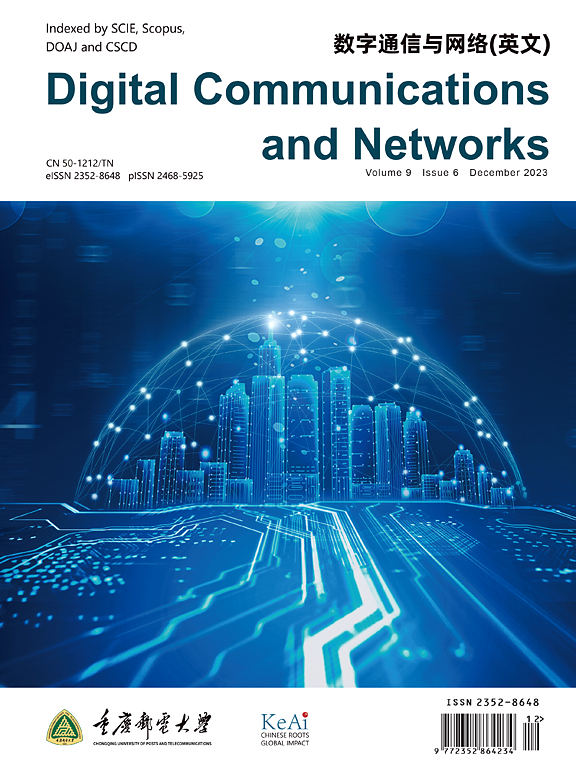Hierarchical detection and tracking for moving targets in underwater wireless sensor networks
IF 7.5
2区 计算机科学
Q1 TELECOMMUNICATIONS
引用次数: 0
Abstract
It is difficult to improve both energy consumption and detection accuracy simultaneously, and even to obtain the trade-off between them, when detecting and tracking moving targets, especially for Underwater Wireless Sensor Networks (UWSNs). To this end, this paper investigates the relationship between the Degree of Target Change (DoTC) and the detection period, as well as the impact of individual nodes. A Hierarchical Detection and Tracking Approach (HDTA) is proposed. Firstly, the network detection period is determined according to DoTC, which reflects the variation of target motion. Secondly, during the network detection period, each detection node calculates its own node detection period based on the detection mutual information. Taking DoTC as pheromone, an ant colony algorithm is proposed to adaptively adjust the network detection period. The simulation results show that the proposed HDTA with the optimizations of network level and node level significantly improves the detection accuracy by 25% and the network energy consumption by 10% simultaneously, compared to the traditional adaptive period detection schemes.
水下无线传感器网络中移动目标的分层检测与跟踪
对于水下无线传感器网络(UWSNs)来说,在检测和跟踪运动目标时,很难同时提高能耗和检测精度,甚至很难在两者之间取得平衡。为此,本文研究了目标变化程度(Degree of Target Change, DoTC)与检测周期的关系,以及单个节点的影响。提出了一种层次检测与跟踪方法(HDTA)。首先,根据反映目标运动变化的DoTC确定网络检测周期;其次,在网络检测周期内,每个检测节点根据检测互信息计算自己的节点检测周期。以DoTC为信息素,提出一种自适应调整网络检测周期的蚁群算法。仿真结果表明,与传统的自适应周期检测方案相比,经过网络级和节点级优化的HDTA检测精度提高了25%,同时网络能耗降低了10%。
本文章由计算机程序翻译,如有差异,请以英文原文为准。
求助全文
约1分钟内获得全文
求助全文
来源期刊

Digital Communications and Networks
Computer Science-Hardware and Architecture
CiteScore
12.80
自引率
5.10%
发文量
915
审稿时长
30 weeks
期刊介绍:
Digital Communications and Networks is a prestigious journal that emphasizes on communication systems and networks. We publish only top-notch original articles and authoritative reviews, which undergo rigorous peer-review. We are proud to announce that all our articles are fully Open Access and can be accessed on ScienceDirect. Our journal is recognized and indexed by eminent databases such as the Science Citation Index Expanded (SCIE) and Scopus.
In addition to regular articles, we may also consider exceptional conference papers that have been significantly expanded. Furthermore, we periodically release special issues that focus on specific aspects of the field.
In conclusion, Digital Communications and Networks is a leading journal that guarantees exceptional quality and accessibility for researchers and scholars in the field of communication systems and networks.
 求助内容:
求助内容: 应助结果提醒方式:
应助结果提醒方式:


